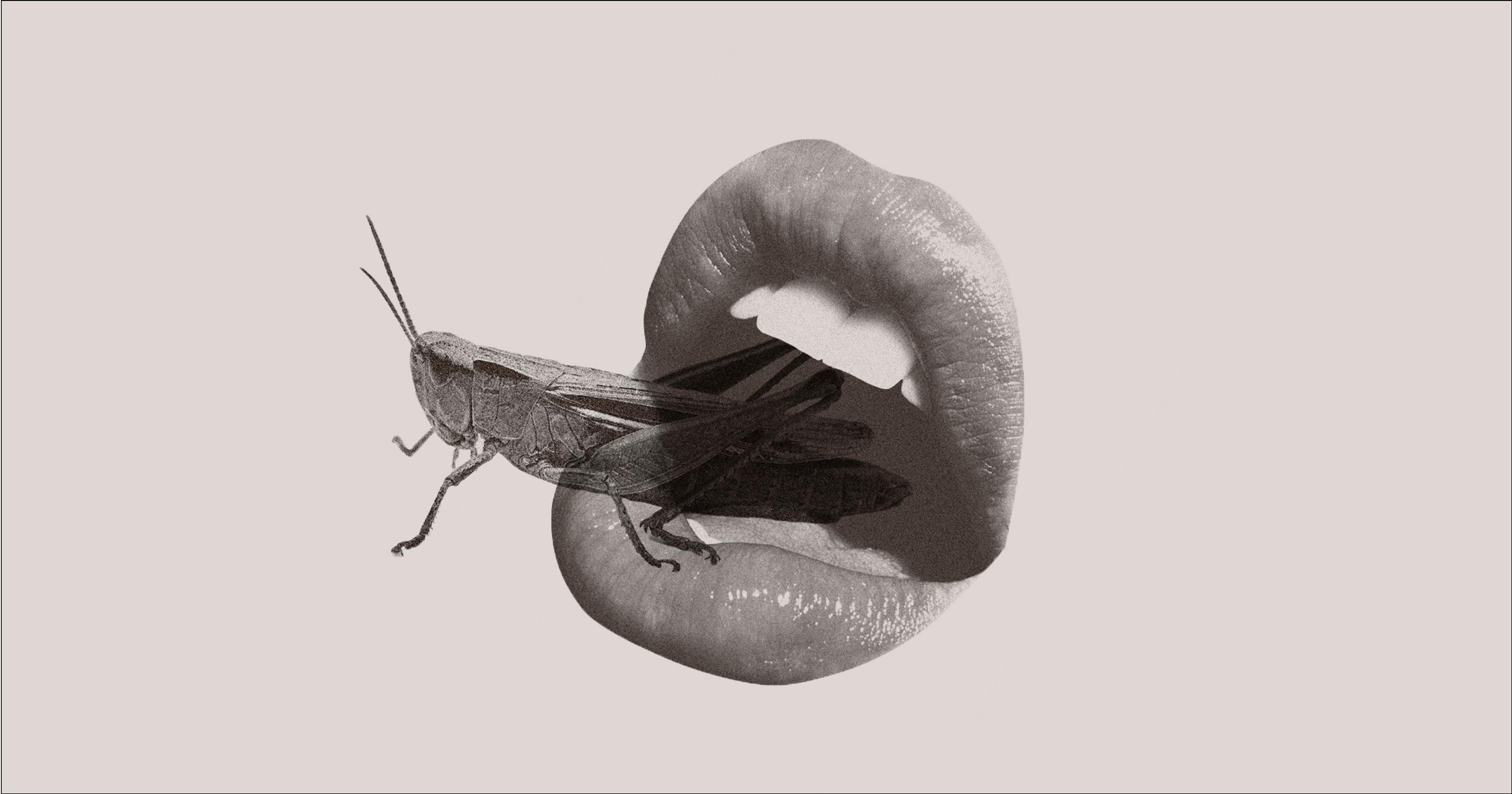You’ve likely heard about the benefits of eating bugs for the health and sustainability of our planet. But is the American palate ready?
Hey kids: Who wants bugs for dinner?
At this point, most U.S. children — and for that matter, their parents — would likely answer in the negative. Sure, some people could muster up the courage to try a candied ant or a mealworm taco at a glitzy food festival, but in terms of making it a staple protein, we’re not there yet.
But a vocal, motivated group of environmentalists, activists, and entrepreneurs have been attempting to broaden the fickle American palate to include some of Earth’s 1,900+ edible insect species as part of their regular diet. Chances are you’ve seen some headlines like “Get Ready for Our Bug-Eating Future!” in the past decade.
From a sustainability standpoint, the pitch is strong: According to the United Nations Food and Agriculture Organization (FAO), the world’s growing population will need to increase agricultural production by around 70% to meet the needs of the world’s projected population — 9.1 billion people by 2050. And while the vast majority of the world’s farmland (about 80%) is used for livestock, products from that livestock only meet roughly 20% of the world’s caloric needs.
Livestock production also accounts for an estimated 15% of global greenhouse gas emissions. Insects like mealworms and crickets are high in protein and minerals like iron and magnesium, and use up magnitudes less space and energy than their clucking, oinking, and mooing counterparts. It is estimated that insect farming uses about 50% less water and emits 75% less carbon than livestock farms.
That said, the current market for edible insects in the U.S. is worth around $30.9 million, according to the most recent numbers from Data Bridget Market Research. Compare that to beef: In 2022, U.S. beef sales hit $30.6 billion, while overall meat sales reached $87.1 billion. Size-wise, it’s like comparing a fruit fly to a cow — the domestic edible insect market is a mere 0.38% of its meaty competitors.
There is clearly room to grow, but the question that no one is yet able to answer is: How will that happen, and how quickly?
Not a Bull Market
One recent survey by YouGov showed that 18% Americans would be willing to eat whole bugs, and 25% would be willing to eat food made with insect ingredients. But it’s still a minority — not to mention that “willingness to try” is a far cry from daily behavior. To wit: Considering how broad the edible insect hype machine is, and how many edible insect products are already available on Amazon, when’s the last time you and a few friends got together over a nice bowl of mealworms?
“Look, it’s an interesting market, and one that has been around for thousands of years in much of the world,” said Garry Michael, founder and owner of online sustainable food retailer Farm2Me. With tens of thousands of brands in the network, there are just two on Farm2Me’s site offering edible insect products. (And one is aimed at pets.)
Healthy Living Market — a thriving regional market with locations in Saratoga Springs, New York, and Burlington, Vermont — is focused on sustainably farmed and produced, eco-conscious whole foods. Naturally, it seems like the market would be ground zero for edible insects. But, like other environmentally focused retailers with slim margins and serious overheads, there are no bugs to be found.
“We know insects are vitamin- and mineral-rich, packed with protein, fiber, omega fats, and iron,” said Amanda Bradley, Wellness Category Manager at Healthy Living. “There are also many potential climate benefits.”
So why doesn’t Healthy Living sell edible insects or edible insect products? Simply put, there is not yet a market for it. “I believe a large cultural shift would need to take place before they become a mainstream ingredient,” Bradley said.
The entrepreneurial space for food is tough — according to market analysts, about 70-80% of products launched in the grocery sector fail. And that includes things that American consumers are currently inclined to put in their mouths. For insect companies, that percentage is surely higher.
“I believe a large cultural shift would need to take place before they become a mainstream ingredient.”
“I’ve seen a lot of companies focused on edible insects either shut down or change what they’re doing,” Michael said.
Chapul, Bitty Foods, Seek, and Neo Bites are just a few of the high-profile edible insect companies that have either pivoted to other products in the insect space or shut down operations in recent years.
Laurie Beyranevand, director of the Center for Agriculture and Food Systems and a professor of law at Vermont Law School, said that while she believes that eating more insects would do the planet good, she simply doesn’t see the market revving up as quickly as many would like.
“You never see edible insects on shelves in the grocery store,” Beyranevand noted. “To me, what’s happening in the legal space around edible insects is very telling.”
Or, as she explains it, what’s not happening. Despite the ready online availability of insect snack products, she said the Food and Drug Administration (FDA) is essentially not regulating the industry.
“The market is so small, and I think the FDA is just turning a blind eye to it,” Beyranevand said. “I think if and when the FDA actually comes out with a formal way to regulate the market … that will mean the market is big enough for the FDA to pay attention to it.”
But despite its tiny retail footprint, one thing the edible insect movement does have is a vocal cross-section of chefs, environmental advocates, and entrepreneurs, all banging the drum on our buggy future.
All the Buzz
If you’ve paid even a little attention to the edible insect marketing push, you’ve likely come across the name Joseph Yoon. Yoon’s a former chef and freelance performer who now bears the lofty title of chef advocate for the U.N.’s International Fund for Agricultural Development, as well as founder of media darling Brooklyn Bugs.
“When I first read the FAO report on edible insect’s role in creating food security, I was inspired and motivated,” Yoon said. He started Brooklyn Bugs as a one-day food festival on Labor Day 2017, focused on education and culminating in a grand 10-course tasting starring edible insects. The response from the buzz-hungry public and media essentially launched an entirely new career for him.
“Talking about and making meals around edible insects is about so much more than just the meal itself,” Yoon said. “It’s sustainability, science, food production. Changing our food system is not a linear process. It’s more like interdisciplinary calculus. We need chefs, entrepreneurs, food manufacturers, scientists, and marketers all working together on different pieces of the puzzle, including changing the way many people think about eating insects.”
That last part is the rub. For all of Yoon’s — and many others’ — tireless advocacy, eating bugs is still largely a novelty in the U.S. That said, it’s worth noting that much of the rest of the world is already convinced. More than 2 billion people consume insects regularly, according to the FAO, and they are widely considered to be one of the most sustainable and nutritious ways to get dinner on the table.
So perhaps it’s merely a matter of time before edible insects take up a substantial part of our diets — there was a time when eating raw fish would have been unthinkable for many. Yoon says that celebrity buy-in and a steady drum-beat of experiential opportunities, coupled with reality checks from the FAO and other environmental agencies, is having an impact.
“Changing our food system is not a linear process. It’s more like interdisciplinary calculus.”
“I’ve personally seen the narrative change,” Yoon said. “A lot of my colleagues feel like there’s not enough progress being made, but considering how personal eating is, and how many people in the West are afraid of insects and have never been exposed to them as something potentially edible and delicious, I think we’ve come a long way. It’s not simple.”
One glimmer of promise? The seemingly greater willingness to try insects if they are simply an ingredient tucked into some other food, like cricket flour or ground ant tortilla chips. As Farm2Me’s Michael said: “It seems doable.”
“The most successful and promising projects … use insects as an ingredient in things like cheese puffs and snack products,” Michael said. “Americans eat a lot of processed foods, and by using insects as a big component in them, there’s an opportunity to make them healthier and more sustainable — and also a lot more marketable than whole edible insects might be.”
Yoon agrees, noting that his advocacy encompasses more than whole-insect consumption. “Look at the peanut or the tomato,” he said. “We don’t just snack on peanuts and tomatoes. We eat them in so many different ways: spreads, sauces, as flavoring components in a range of products and dishes, and as building blocks for snack bars and other items.”
Eco-Industrial Insect Farming
While the edible insect market may still be struggling for humans in the U.S., what about our pets, and the livestock we end up eating? There’s an emergent market in raising bugs to feed animals, and its sustainability is worth noting for that future moment we might decide to swap bugs for beef.
Many of the top producers in the industry, like Yoon, were inspired to get into the market following the FAO’s call to action. “The lion’s share of emissions created in the agricultural industry are from the feed animals get,” said Sean Madison, director of business development at Innovafeed, a company founded in 2016 by French engineers. “Chemical inputs on soil is also a big problem.”
Choosing one insect to focus on is common for large-scale farms like Innovafeed. Madison explained they chose the black soldier fly because it produces a digestible and healthy oil and a balanced protein, while also being highly scalable. The team grows and harvests the insects, and then gives the raw materials to companies that manufacture animal feed, pet food, and fertilizer.
“We can feed them with either wheat- or corn-based feed stocks, and they have a short life span of 45 days,” he said. “We typically harvest them at two weeks [of age]. They also are perfect for vertical farming because they’re silent and they like to congregate.”
The company started with a symbiotic-industrial-scale model in France that they have since exported elsewhere, including Decatur, Illinois. Here’s how it works: The team sets up a factory next to a large wheat or corn manufacturer. They use that factory’s organic byproducts, sent through a pipeline, to feed the flies. Innovafeed also sets up close to green energy plants, and uses a combination of their waste energy and renewable energy to power their operations. The company currently has three factories, and plans to have 10 by 2030.
“With a growing interest in protecting our planet, anything is possible.”
Ynsect, also based in France and founded in 2011 by scientists and environmental activists, just opened its first farm in the U.S. The Nebraska-based facility focuses on mealworms and, like Innovafeed, raises the bugs as animal and fish feed, pet food, and fertilizer.
“Today, our biggest market is pets,” Ynsect’s president and CEO Antoine Hubert said, adding that their products end up in several animal nutrition brands. Mealworms are the insect of choice, Hubert explained, because in addition to a very high (72%) protein content, they are highly digestible, hypoallergenic, and have been shown to decrease the incidence of skin diseases.
Plus, raising them uses “98% less land than traditional farmers, while significantly reducing its carbon footprint for protein production.” Ynsect plans to aggressively scale up, with an eye on human eaters too.
“Our ambition is to build a dozen vertical farms worldwide by 2030,” Hubert said. “In 2022, we signed an agreement with [flour milling company] Ardent Mills to build sites together. Future U.S. farms will be designed to meet growth in the animal feed market, as well as demand from the human nutrition market.”
Eating chickens and salmon that have dined on insects or feeding your dog bug-infused chow still remains more palatable than eating it ourselves. Insect flours and similar camouflage may be the best entry point for fickle consumers — but we’ll see how that plays out at dinner tables.
Of course, the stakes couldn’t be higher: The planet is facing a food and climate crisis that could be significantly deferred and rerouted if we all start making sustainable choices like eating bugs. Insects can also, as Ynsect and Innovafeed demonstrate, feed the food we eat, the pets we love, and the soil that grows our produce and grains.
There is no silver bullet when it comes to bug farming for the betterment of the planet. Instead, as Yoon said, “interdisciplinary calculus” must be utilized in the production and marketing of edible insects if we want them to be successful in the long-term.
And, as Bradley said, “With a growing interest in protecting our planet, anything is possible.”










